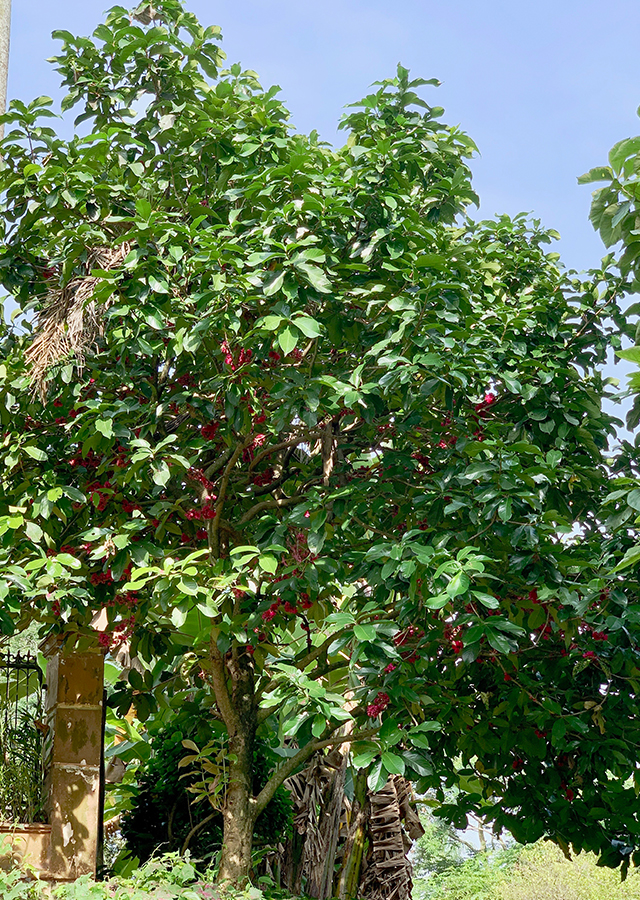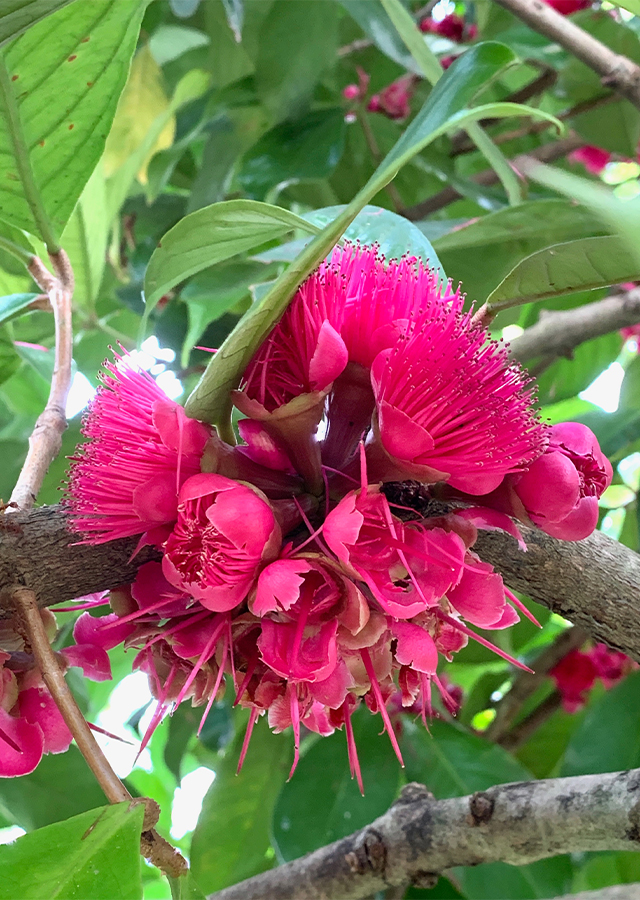Traditional Herbs from Syzygium malaccense
diarrhea
- Prepare 100 g of ripe guava fruit. Wash the fruit thoroughly.
- Eat it directly to reduce diarrhea.
What is Syzygium malaccense Looks like??



Parts of Syzygium malaccense that could be used
- Leaves
- Bark
- Fruit
- Roots
Syzygium malaccense Distribution
Originating from Southeast Asia, then spread to tropical Europe and tropical America. In Indonesia, guava bol is widespread in almost all of the archipelago, such as Sumatra, Kalimantan, Java, Madura, Bali, Nusa Tenggara, Sulawesi, Maluku, Halmahera, Ambon and Irian Jaya. Often planted as an ornamental plant in home gardens. The fruit can be consumed fresh or processed. Has efficacy as a traditional medicine.Agroecology of Syzygium malaccense
Grows in tropical environments from lowlands to highlands reaching 1,200 m above sea level. Soil with acidity (pH) between 5.5-7.5 is very suitable for growth.
Morphology of Syzygium malaccense
- Tap root, strong (sturdy).\u00a0
- Hard woody stem (lignosus), cylindrical in shape, grayish brown bark.
- Leaves\u00a0single, located opposite each other on a short stalk, oval to elliptical in shape, pointed leaf tip, tapered leaf base.
- Pink flowers, pom-pom shaped, funnel shape, number of sepals and petals 4.
- Fruit oval, fleshy, red to dark red with white or pink lines. Each fruit contains 1 seed.
- Seeds are round, large, brown.
Cultivation of Syzygium malaccense
- Propagation is carried out generatively (seeds) and vegetatively (grafting, cuttings and grafting).
- Seeds come from superior varieties of plants, namely large and healthy trees, ripe fruit, large and sweet, productive, more than 15 years old.
- Top pruning is done regularly to produce lots of fruit.
Syzygium malaccense, more details :
Chemical Content of Syzygium malaccensePhenolic acids (coumaric and benzoic acids), alkaloids, saponins, tannins, flavonoids, quinones, anthocyanins, procyanidin, quercetin, carotenoids and steroids.
Benefits of Syzygium malaccense
Antioxidant, anti-inflammatory, anti-diabetic, treats itching, lowers cholesterol, treats canker sores and diarrhea.
Simplisia of Syzygium malaccense
- The guava leaves that have been collected are weighed, washed and then drained.
- The leaves are air-dried until dry (\u00b1 7 days).
- The dried leaves are then ground to a fine powder and sieved with a 60 mesh size.
- Store in a clean, airtight container.
Another Facts for Syzygium malaccense :
Synonym of Syzygium malaccenseCaryophyllus malaccensis (L.) Stokes, Eugenia domestica Baill., Eugenia macrophylla Lam.
Habitus of Syzygium malaccense
Tree. Annual tree, reaching 5-20 m high
Habitat of Syzygium malaccense
- Mainland
No comments:
Post a Comment